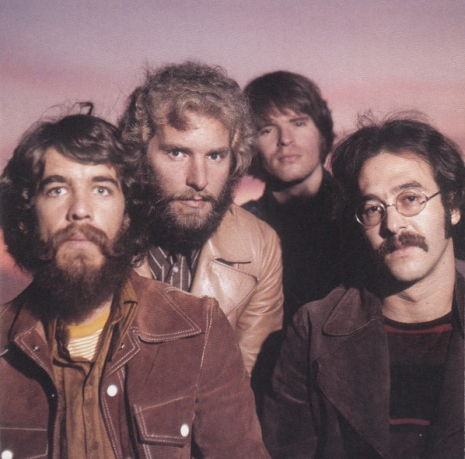
When one thinks about Creedence Clearwater Revival the terms “psychedelic” or “avant-garde” usually don’t come to mind. The Bay Area unit was first and foremost a rock-n-roll group, their unpretentious, southern-flavored style standing in contrast to psychedelic rock, and San Francisco jam bands like Jefferson Airplane and the Grateful Dead. So, it might come as a surprise—as it’s rarely talked about—but CCR did actually dabble in psych and the avant-garde.
While Creedence’s self-titled debut album, released in the summer of 1968, did include a handful of songs with psychedelic elements, and the group would stretch out on some of their subsequent album tracks, few would categorize any of it as experimental. One notable exception is the final number on their sixth LP.
Released in December 1970, Pendulum did expand on the CCR formula, bringing horns and keyboards into the mix, but even still, this wouldn’t have prepared Creedence fans for the album’s closing number, “Rude Awakening #2.” This instrumental starts off sounding very much like a standard CCR tune, before morphing into something else altogether. It’s definitely psychedelic, but also has dramatic qualities. To my ears, it sounds inspired by the Sgt. Pepper’s track, “A Day in the Life.” It’s definitely weird, but, ultimately, the song doesn’t really go anywhere, and after six-plus minutes, “Rude Awakening #2” simply fades out.

In his autobiography, Fortunate Son, band leader John Fogerty wrote about the track.
The only thing we ever really collaborated on as a band was the six-minute-plus instrumental with sound effects called “Rude Awakening #2.” (Which begs the question, what was “Rude Awakening #1”?). The Beatles had done this “sound collage” called “Revolution 9”; that type of thing was in the air. I’d recorded a beautiful fingerpicking song that I did with a split pickup guitar. I liked the song, but the stuff added on after it is just free-form nonsense. Doug [Clifford, drummer] farts on the track—that was his contribution. So that’s the one and only Creedence collaboration. A masterpiece? No.
I would definitely agree that “Rude Awakening #2” isn’t CCR’s pièce de résistance, but I think the comparison to “Revolution 9” is more apt in regard to an even more bizarre Creedence work.

A couple of months prior to the release of Pendulum, a promotional-only CCR 45 was sent to radio stations. The two-part “45 Revolutions Per Minute” was described by Fogerty in Fortunate Son as a “little two-sided narrative for the fans.”

While the text on the cover of indicates the 7-inch is “meant to thank radio disc jockeys,” the record is, in part, a parody of the sort of interviews in which band members are asked the usual, banal questions by dopey DJ’s. It’s also the strangest thing Creedence ever issued, an avant-garde exercise with lots of tape manipulations and sound effects. Think “Revolution 9” and the Beatles’s wild comedy number, “You Know My Name (Look up the Number).”
“45 Revolutions Per Minute” is now a pretty rare record, though a reissue was included with the vinyl edition of The Singles Collection.

Still searching for an Xmas gift for the Creedence fan in your life? Well, look no further than the recently released LP box set, The Studio Albums Collection (Half-Speed Masters).

We’ll leave you with a French TV profile of Creedence Clearwater Revival. The segment largely consists of footage of the band in their rehearsal space in San Francisco. The group dubbed the converted garage/warehouse “Cosmo’s Factory,” which is also the name of their fifth album.